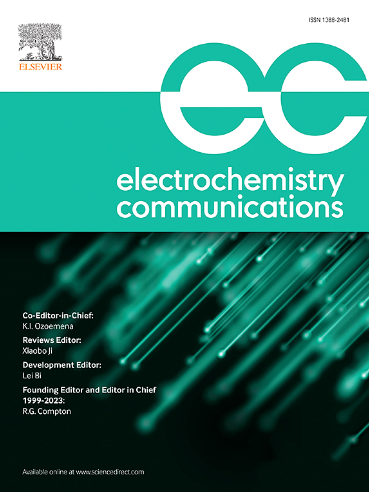Vanadium disulfide-modified lithium aluminum titanium phosphate/polymethyl methacrylate composite separator with hierarchical interface architecture for advanced lithium-sulfur batteries: A synergistic strategy for enhanced electrochemical performance and interfacial stability
IF 4.2
3区 工程技术
Q2 ELECTROCHEMISTRY
引用次数: 0
Abstract
Lithium‑sulfur batteries have attracted significant attention as next-generation energy storage solutions due to their exceptional theoretical energy density (2600 Wh/kg) and economic viability. However, two fundamental challenges have hindered their practical application: the formation of lithium dendrites at the anode interface, which compromises safety and longevity, and the “shuttle effect” of polysulfide intermediates at the cathode, resulting in capacity deterioration and compromised cycling performance.
This study presents an innovative bifunctional separator design that simultaneously addresses these critical limitations through interface engineering. The separator architecture features a rationally designed vanadium disulfide (VS₂) composite layer functionalized with boron nitride nanosheets at the anode interface, which effectively suppresses dendrite nucleation and growth. Concurrently, at the cathode interface, a lithium aluminum titanium phosphate/polymethyl methacrylate/polyvinylidene fluoride (LATP/PMMA/PVDF) composite structure has been engineered to enable effective polysulfide confinement and enhance electrochemical reaction kinetics.
This bifunctional separator demonstrates excellent electrochemical performance, achieving a specific capacity of 677.8 mAh g−1 at 2C rate while maintaining exceptional cycling stability over 800 cycles. These results represent a significant advancement toward the commercial realization of high-performance lithium‑sulfur batteries.
具有分层界面结构的二硫化钒改性磷酸铝钛锂/聚甲基丙烯酸甲酯复合隔膜:一种增强电化学性能和界面稳定性的协同策略
锂硫电池作为下一代储能解决方案,因其卓越的理论能量密度(2600 Wh/kg)和经济可行性而备受关注。然而,两个基本的挑战阻碍了它们的实际应用:阳极界面形成锂枝晶,影响安全性和寿命;阴极多硫中间体的“穿梭效应”,导致容量下降和循环性能下降。本研究提出了一种创新的双功能分离器设计,通过界面工程同时解决了这些关键限制。该隔膜结构采用合理设计的二硫化钒(VS₂)复合层,在阳极界面处用氮化硼纳米片功能化,有效抑制枝晶成核和生长。同时,在阴极界面,设计了磷酸铝钛锂/聚甲基丙烯酸甲酯/聚偏氟乙烯(LATP/PMMA/PVDF)复合结构,以实现有效的多硫约束并增强电化学反应动力学。这种双功能分离器具有优异的电化学性能,在2C倍率下达到677.8 mAh g - 1的比容量,同时在800次循环中保持优异的循环稳定性。这些结果代表了高性能锂硫电池商业化实现的重大进步。
本文章由计算机程序翻译,如有差异,请以英文原文为准。
求助全文
约1分钟内获得全文
求助全文
来源期刊

Electrochemistry Communications
工程技术-电化学
CiteScore
8.50
自引率
3.70%
发文量
160
审稿时长
1.2 months
期刊介绍:
Electrochemistry Communications is an open access journal providing fast dissemination of short communications, full communications and mini reviews covering the whole field of electrochemistry which merit urgent publication. Short communications are limited to a maximum of 20,000 characters (including spaces) while full communications and mini reviews are limited to 25,000 characters (including spaces). Supplementary information is permitted for full communications and mini reviews but not for short communications. We aim to be the fastest journal in electrochemistry for these types of papers.
 求助内容:
求助内容: 应助结果提醒方式:
应助结果提醒方式:


